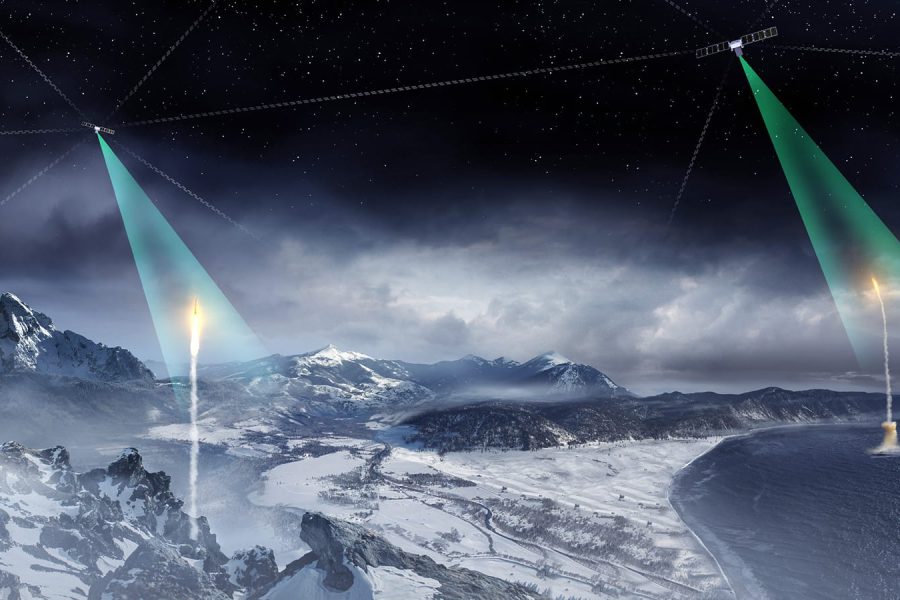The prospective next head of the Pentagon’s intelligence enterprise will face dicey challenges guiding how space-based tracking and targeting duties will be split among multiple agencies, but at her July 11 confirmation hearing she promised to stress the importance of collaboration and sharing.
Tonya P. Wilkerson, deputy director of the National Geospatial Intelligence Agency and nominated to become undersecretary of defense for intelligence and security, was questioned re[eatedly by members of the Senate Armed Services Committee about how intelligence and military agencies can better deliver moving target indication (MTI) from space.
With the Pentagon phasing out older airborne platforms, like the E-3 AWACS and E-8 JSTARS, space-based sensors are needed to assist in directing fires against enemy targets. But turf disputes over who owns what and what data can be shared with who, and how fast, remain, frustrating military commanders.
The Space Force, the National Reconnaissance Office, and the National Geospatial-Intelligence Agency all gather space-based intelligence. All have expressed interest in both new targeting satellites and leveraging commercial satellite data for targeting. But reports and public comments make clear tension and disagreement remains.
At the GEOINT Conference in May, Space Operations Command boss Lt. Gen. David N. Miller Jr. argued against “anything that introduces delay in data being provided to commanders and shooters to either defend themselves and their team or prosecute, close with and destroy the adversary.”
“Operational headquarters and agencies back in the rear don’t win or fight conflicts,” Miller added. “It’s not about offline analysis. It’s providing that directly to the shooters so that they can provide the effects on the battlespace that we need.”
Soon after, NGA Director Rear Adm. Frank Whitworth—Wilkerson’s current boss in her role as deputy director—told conference attendees that “for anyone who suggests we’re not moving as rapidly as possible—in our actions and our products—let me be clear: That’s a complete myth.”
Wilkerson, if confirmed, would bring years of experience at NGA and NRO to her new role, which would also entail working out the kinks between those agencies and the Space Force. Congress designated the Secretary of the Air Force as the primary authority for for presenting tactical ISR to combatant commanders. But how that happens, and who owns the sensors generating that ISR, is still being worked out.
In both his opening statement and questioning, SASC chair Sen. Jack Reed (D-R.I.) pressed Wilkerson on how the NRO, NGA, and other agencies can “continue to assist the Space Force in providing space-based ISR support to the combatant commanders for their tactical level operations.”
Wilkerson responded: “I am very, very much tracking the current direction and am supportive of the decisions that have been made to date by the Secretary and the [Director of National Intelligence],” she said. “What I would look to do, if confirmed, is ensure that we don’t take our eye off the ball of ensuring that the right information is getting to the right people at the right time, which is really the outcome that we’re trying to drive with respect to the new architecture.”
Officials from both the Space Force and NRO said recently that the NRO will lead the acquisition process and the Space Force and NRO will jointly fly satellites “shoulder to shoulder,” and that the combatant commands will have authority to task the Space Force and NRO. The Space Force chose command and control for MTI as a “quick start” program recently, using new authority to proceed with a program without specific congressional approval. Also recently, the NRO launched two batches of satellites into low-Earth orbit. Although their exact mission remains unclear, a constellation in LEO could provide effective MTI.
Some experts want the Space Force to go its own way, however, and build its own targeting satellite constellation from scratch. That would provide a tactica/strategic divide, with the Space Force focused on support for troops on the tactical level and the intelligence community focused on strategic-level ISR.
Wilkerson disagreed with that approach. “I think there’s always opportunity space to continue to strengthen the interaction between organizations,” she said. “I wouldn’t necessarily indicate that it’s a problem. I would rather note that there’s an opportunity space for continued engagement.”
Sen. Mark Rounds (R-S.D.) urged Wilkerson to ensure space-based targeting is done under military “Title 10” authorities, not the intelligence community’s “Title 50” authorities.
Wilkerson agreed to do so, noting that MTI is “a topic of high interest at this time.”
Wilkerson also faced questions from senators worried about the Pentagon’s security clearance processes, which have come under scrutiny with the massive leak of intelligence from Senior Airman Jack Teixeira, a subsequent Pentagon-wide review, and a GAO report on years of mismanagement when it comes to modernizing the system.
Pledging to foster a “culture of individual and collective accountability” to stop leaks, Wilkerson also acknowledged that the GAO report identified many problems and recommendations to work on as she hopes to oversee the Defense Counterintelligence and Security Agency.



